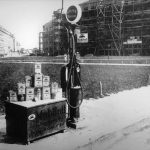The biggest natural disaster in Zagreb took place 53 years ago.
If you’re not from Zagreb, you’ve probably noticed that Zagreb is one of the few cities in the world that has no connection to its river. When you think of Paris, you imagine crossing all the beautiful bridges across the Seine, London wouldn’t be what it is today without the Thames, Tejo in Lisbon, Ljubljanica in Ljubljana – rivers seem are normally integral parts of the lives of their cities, sometimes synonymous with them even, but that’s not the case in Zagreb.
We could say that the Medveščak Creek that used to flow through what is now Tkalčićeva had a bigger importance for the life of people of Zagreb than the Sava did – it wasn’t until the 18th c. that the first bridge crossing the river was built, and Novi Zagreb wasn’t built until the second half of the 20th c.
There have been some architectural and urban plans to revive the banks of the river and try to incorporate it into everyday life, but, to no avail.
Why, you ask?
One of the reasons is the astonishing force of this capricious river, the best example of which took place on October 25 and 26, 1964.

Tratinska/Kranjčevićeva
It had been raining for a long time and the water levels kept rising on October 25 until, in the early morning of October 26, it engulfed one-third of the city (60 square kilometres), where 183,000 people lived at the time. The river broke through its natural riverbed, bells sounded the alarm in the centre of the city, but no other types of emergency or alarm sounds were raised, and the radio and TV news also came too late.

The situation was hectic – people started running to the centre with their children in one hand and all their belongings in the other; a report from Vjesnik at the time states that the water level rose by 1.2 metres in a matter of hours.


At 8 a.m. the water-level reached 514 cm (just to give you an idea of what it was like, it is currently at 164 cm, so the difference is more than three metres). Even though the citizens were well organised and managed to put up temporary levees, the water managed to reach Trnje and Trešnjevka districts, flooding the newly-built skyscrapers. The final barrier for the water were sandbags near the Student Centre. Boats were used as a transport method instead of trams in Savska Street.


Vjesnik Skyscraper
Students at dorms were completely cut off from the rest of the city, surrounded by water. The crisis unit for fighting the flood was located at the City Hall, and there was a helicopter pad in front of it. The army and the air force played the biggest role in providing relief and helping citizens.

The entire southern part of the city, 14 km in length and 1-4 km in width, was covered in water – 49 km2 of the central city area.

Savska


Vrbik
Help came from all over the world – 17 people died, 40,000 people were left without their homes, 10,000 apartments were completely destroyed, as well as 3,297 business units, 2 km of the motorway, 350 km of roads, and 65% of the construction material from warehouses was lost. The damage cost amounted to 100 billion dinars, which was 81.9% of the BNP of the entire Socialist Republic of Croatia, part of Yugoslavia at the time.

Držićeva


After the flood
It is the biggest natural disaster to hit Zagreb, and a serious flood defence and prevention system was finally built in Zagreb, Karlovac and Sisak after the flood to prevent it from ever happening again.
A documentary film about the devastating flood was also made, and you can watch it below:
https://www.youtube.com/watch?v=ybhN-k-PSsQ
All photos from Zagreb – kakav je bio nekada, Facebook.









